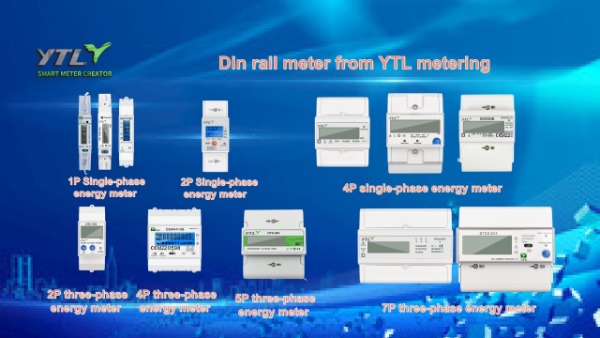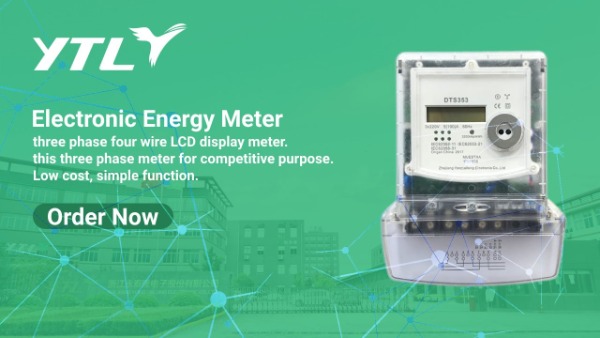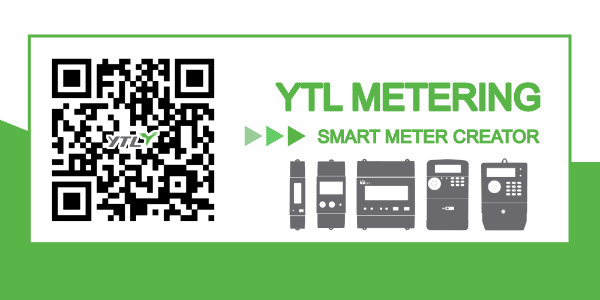Comparison between Din rail Mounted Electricity Meters and Wall Mounted Electricity Meters
Comparison between Din rail Mounted Electricity Meters and Wall Mounted Electricity Meters
Din rail Mounted Electricity Meters and Wall Mounted electricity meters differ significantly in terms of installation methods, application scenarios, and functions. Both types of meters adhere to the same standards for performance, safety, and reliability. In the future, they will trend towards smartification.
Installation Methods
 Din rail Mounted Electricity Meters:
Din rail Mounted Electricity Meters:
* Flexible installation: Din rail Mounted Electricity Meters are installed via standard tracks, such as 35mm DIN tracks, making the installation process quick and convenient. Simply slide the meter into the track, and it's ready to use.
* Space-saving: The compact design allows the meter to be easily embedded in electrical cabinets without taking up extra space, making it ideal for space-constrained environments.
* Easy replacement: When replacing the meter, simply remove the old one and slide in the new one without needing to rewire or adjust the installation location, making maintenance and replacement a breeze.
 Wall-Mounted Electricity Meters:
Wall-Mounted Electricity Meters:
* Wall Mounted installation: Wall Mounted electricity meters are typically hung on a wall with a pre-drilled hole and secured with an installation bracket. Although the installation process is relatively simple, it may not be suitable for spaces with limited space constraints.
Functionality
Din rail Mounted Electricity Meters/Wall-Mounted Electricity Meters:
* Multi-functionality: Both types of meters not only provide basic power measurement functions but also integrate various extended functions, such as real-time monitoring of current, voltage, power factor, and remote transmission of electricity data. These features enable comprehensive and efficient energy management and monitoring.
* High-precision measurement: Both types of meters utilize advanced measurement chips and technology, ensuring high accuracy and stability under various load conditions, meeting precise measurement requirements for energy management.
* Remote communication: Both types of meters support various communication protocols and methods, including RS485, Wi-Fi, WiFine, LoRa, 4G, PLC, etc., allowing for remote data transmission and monitoring. Users can access real-time usage information remotely and manage their energy usage.
Safety and Reliability
Din rail Mounted Electricity Meters/Wall-Mounted Electricity Meters:
* Industrial-grade design: Both types of meters have industrial-grade designs that include overload protection, short-circuit protection, and electromagnetic interference protection. The measurement circuit is fully isolated from the power source, further enhancing safety and reliability.
Application Scenarios
Din rail Mounted Electricity Meters:
* Widespread application: Due to their flexibility and multi-functionality, Din rail Mounted Electricity Meters are widely used in various scenarios. They can be applied in industrial settings such as factories and workshops; commercial settings like shopping malls and office buildings; and residential settings like household electrical systems. Additionally, they are suitable for applications in buildings, data centers, automated production lines, etc.
Wall-Mounted Electricity Meters:
* Primary applications: Wall Mounted electricity meters are mainly used in residential, commercial, and industrial settings.
Future Development Trends
As smart grid and IoT technologies advance, Din rail Mounted Electricity Meters/wall-mounted electricity meters will trend towards smartification. Their high-precision measurement capabilities, remote communication functions, and data analysis will provide users with more convenient and intelligent energy management solutions.


Comments
Post a Comment